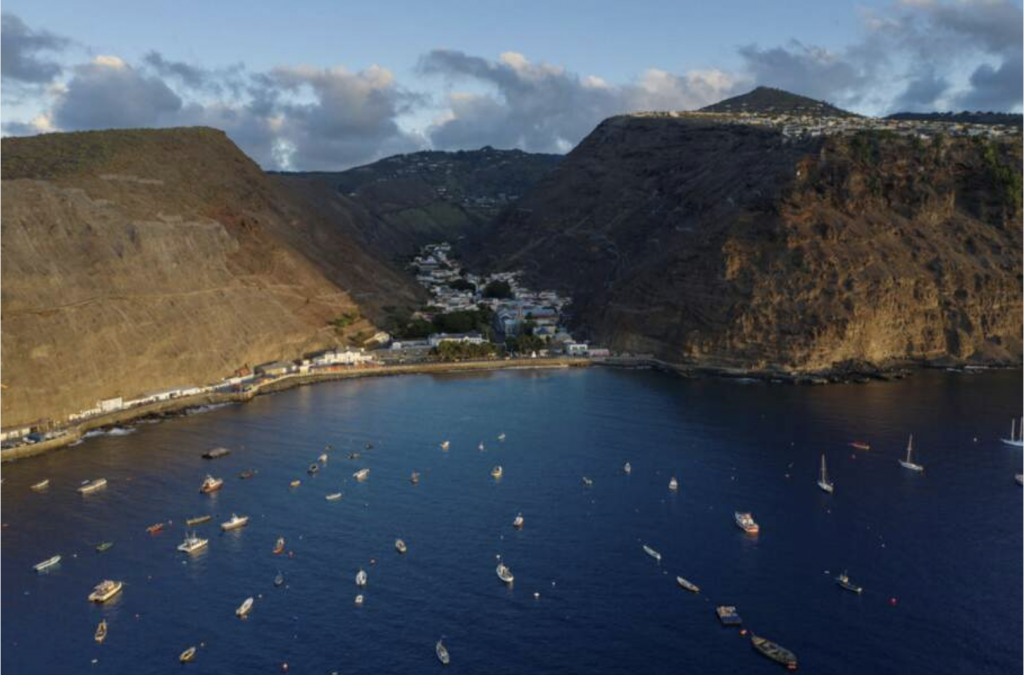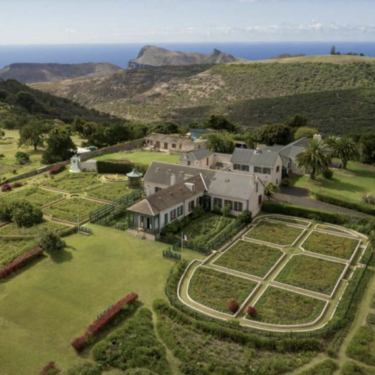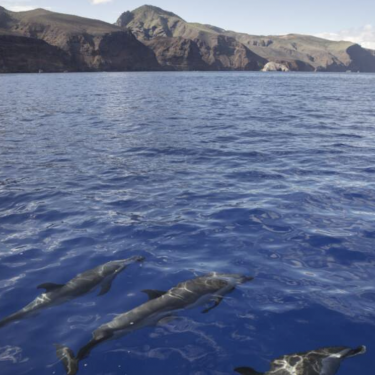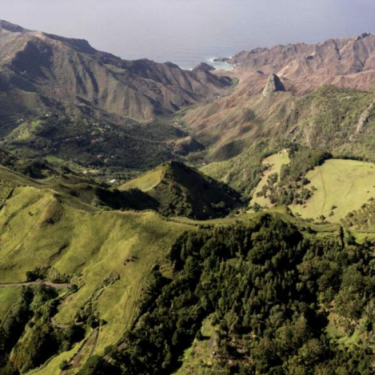In January, the participants in the Grand Large Yachting World Odyssey made a stopover at the island of Saint Helena. It was an opportunity to (re)discover this British territory in the South Atlantic, which is isolated to say the least, and mainly known for its history… An atypical stopover to consider when sailing up the Atlantic from the Cape of Good Hope.
Situated some 1,000 nautical miles west of Angola and almost 1,800 nautical miles east of the Brazilian coast, the volcanic island of Saint Helena is one of the 4 islands of the British Overseas Territories, along with Ascension, Tristan da Cunha and Gough.
Discovered in 1502 by the Galician navigator Joao de Nova, in the service of Portugal, the island was later Dutch, before being annexed by the British East India Company and then ceded to the Crown in 1834. It has always been a favourite stopover for merchant ships, providing them with fresh water and fresh food supplies, earning it the name “The Ocean Inn”.
In 1815, the island had already been loaned to the British government, which, wary of Napoleon Bonaparte after the War of the Seventh Coalition and wanting to avoid his return to France, sought a place of exile far from Europe. The secluded island of St Helena in the southern hemisphere formed the perfect choice!
The island measures 11.5 km from north to south and 13.5 km east to west and has a total area of 91 km². Its highest point is Green Mountain, 859 m above sea level. Although it is well in the tropics, it is very dry and has a mild desert climate. Until 2018, the RMS St Helena linked the island (and its distant neighbours in the British Overseas Territories) to Cape Town in South Africa. Today, the island can be reached by plane from Johannesburg.

© Hector John Periquin
A welcome stopover for circumnavigators on passage between South Africa and Brazil, the island has no sheltered harbour. However, Jamestown Bay, protected from the south-westerly winds, does offer a few moorings. The residual swell can be quite pronounced, so disembarking by your own means in a dinghy is strongly discouraged. Hence the presence of a friendly roadstead service! From the boat, the view of the high, arid volcanic coastline is both impressive and magnificent.

Jamestown Bay – © Giulio di Sturco
What to do once you’ve stepped ashore? A visit to Longwood, the house where Napoleon was ‘detained’, is a must! You can also visit Ann’s Place, a yacht club with a somewhat tropical rather than British atmosphere. The Consulate Hotel also boasts a collection of Napoleonic relics and maritime artefacts. Finally, a tour of the island by car is a must, to discover the three types of landscape that exist side by side: arid volcanic, lush tropical and Scottish countryside.
Dolphins, whale sharks, devil rays… in the crystal-clear waters of Saint Helena, marine wildlife enjoys a playground rarely visited by humans. Snorkellers and divers will find this a paradise, with no fewer than 8 wrecks within easy reach.
To the left: Napoleon’s gardens at Longwood House – © Giulio di Sturco
For more information and ideas, go to https://www.sthelenatourism.com
Sources :












